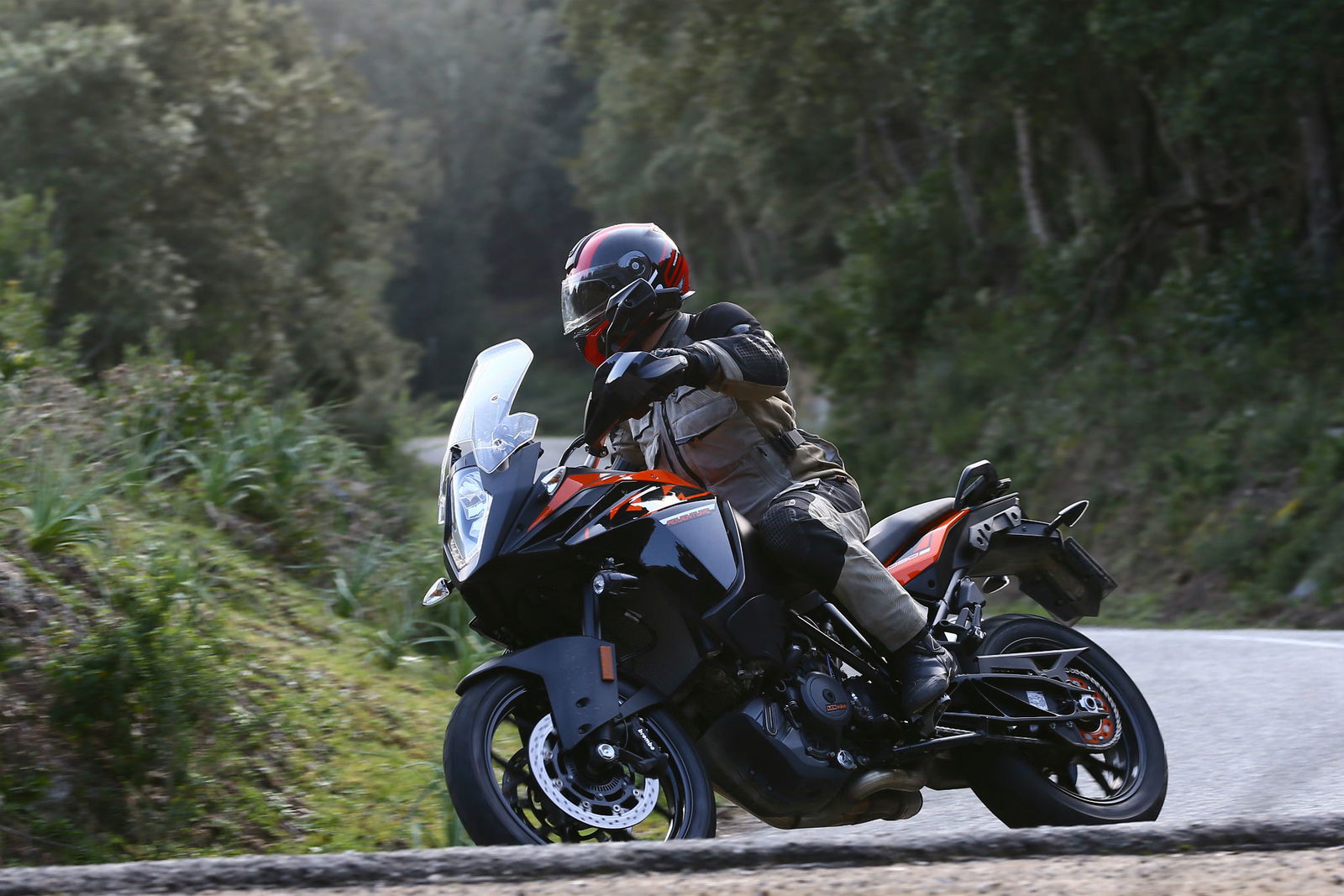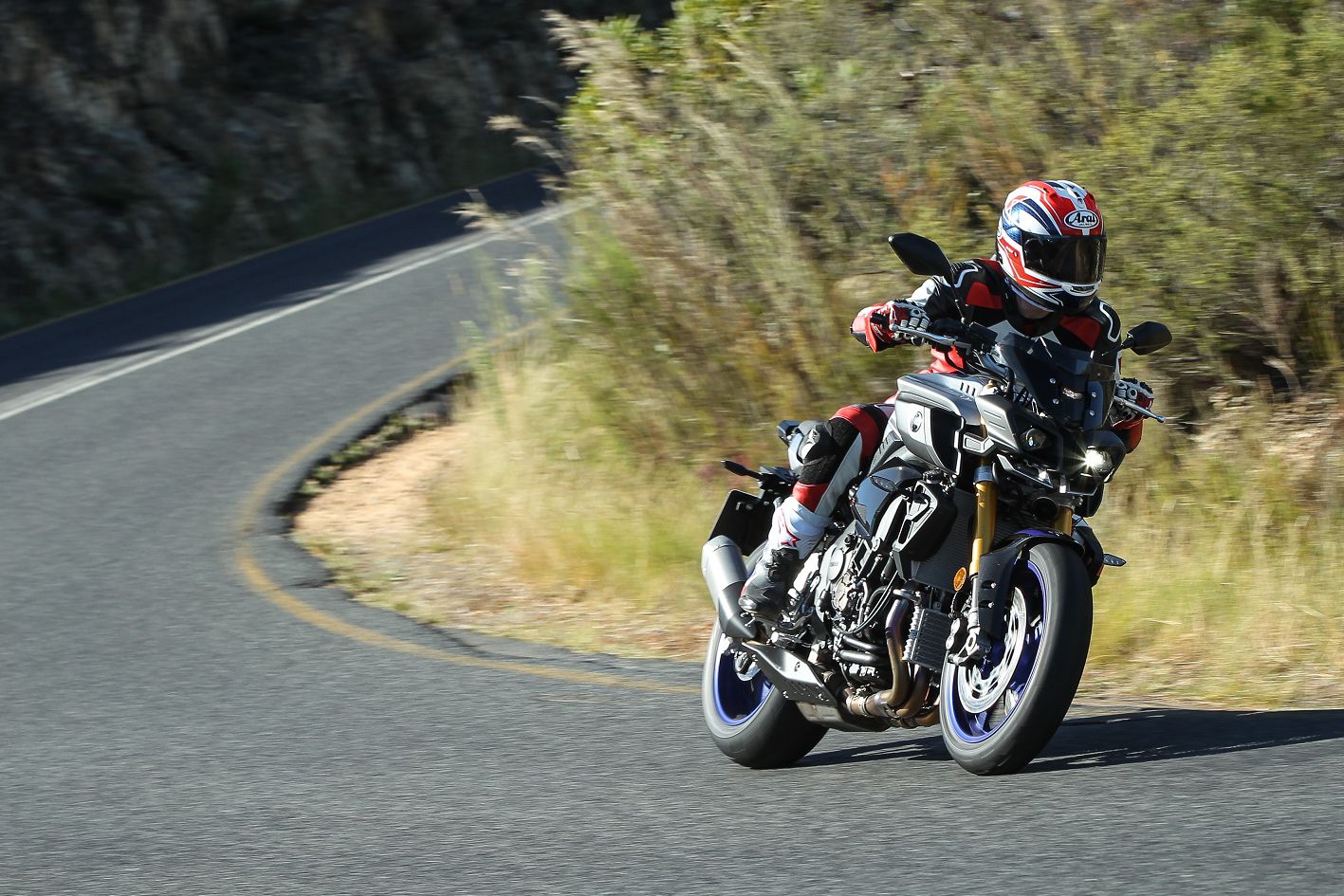First ride: 2017 Yamaha TMAX DX review
Top-spec two-wheeled transport that mixes attitude, fun, functionality and luxury with aplomb

IN THE 16 years it’s been on sale, Yamaha’s TMAX has managed to define itself as the big scooter to turn to if you’re after something with more personality than your average big Burgman, Honda Integra or bulbous BMW C650GT. It’s the scooter to be on if you want comfort, convenience and a splash of attitude.
As someone who spends a lot of time in and around London, the TMAX is only an occasional sight on the city’s streets, but its homelands are Spain, France and Italy, where it’s the maxi-scooter de jour, mange tout.
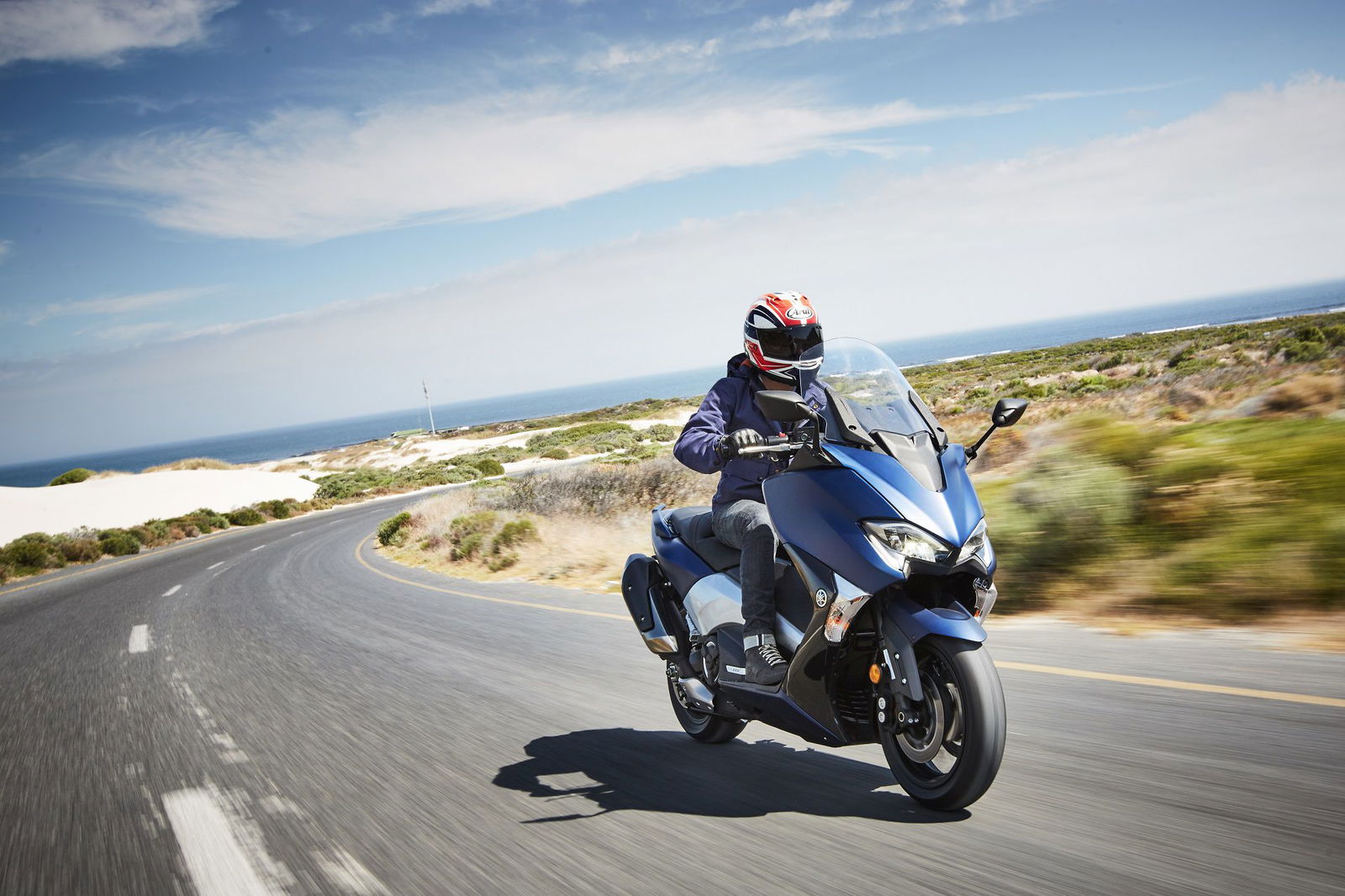
In fact, the TMAX is the best selling maxi-scooter in Europe but what you need to know is that the 2017 model is the sixth generation of the TMAX. The latest incarnation has received a raft of changes and Yamaha says that it benefits from better acceleration, agility and lower weight. It’s also got a more sporty design with LED lights a great finish (with particularly nicely textured plastics) - it definitely looks more stylish and makes its competitors look reserved. It’s not short on functionality either, and that was obvious before I’d even ridden it, thanks to the keyless ignition system.
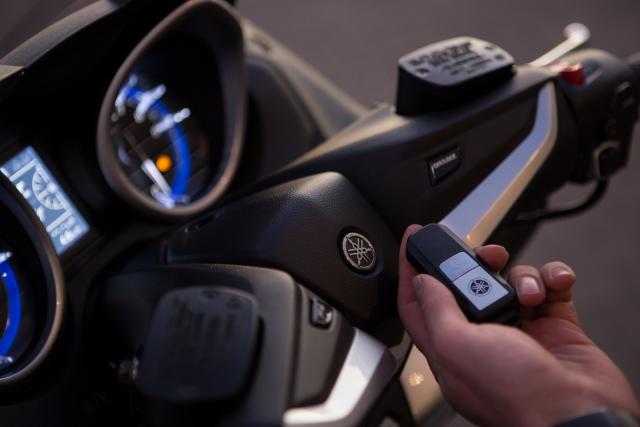
The TMAX range has also expanded; it’s now made up of three bikes: the standard TMAX (below in black), the SX (below in white) and the DX (below in blue).

We’re only getting the standard model (£9,399) and the DX (£10,699) in the UK; strip the heated bits, adjustable screen and power modes from the DX and you’ve got the base model TMAX. Price-wise, the DX is more expensive than the Burgman 650 Executive - £8,999 but its price is comparable to the BMW C650GT, which starts from £9,900, but has a price that soon start to grows once you begin adding speccing it up to the TMAX DX’s level. However, more than £10-large for a scooter is a serious amount of money.
I rode the DX but on the test ride in and around a roasting hot Cape Town. At first, I could have happily ridden the standard bike because who needs heated grips and seat when it’s over 30 degrees outside? No one wants their plums or punani reaching such dangerous temperatures.
I gave the heated bits a whirl and both seat and grips (each with multiple settings) quickly got warm. I know the seat worked well because soon after pressing the button, I felt that familiar sensation that led me to question whether I’d wet myself or if, in fact, the seat was doing its thing. (It was the seat).
The DX’s other gadgets give it a similar level of luxury. The electronically adjustable screen works superbly and operates faster and smoother than my mate Gareth in Wetherspoon’s on a Friday night. With the screen in its tallest position, all windblast and noise is eliminated – just the thing to make long motorway rides feel like less of a slog.
And the TMAX will happily handle a long, fast motorway ride; I’d happily take one to Scotland or some other equally far-flung and mythical place.
There are a couple of reasons for that, not least the engine.
The TMAX’s 530cc parallel-twin still makes the same 45hp and 39 lb/ft torque as before, but it’s now Euro4 compliant and thanks to a new airbox, injectors, and thermostat cover, it’s no slouch in town or on an open road.
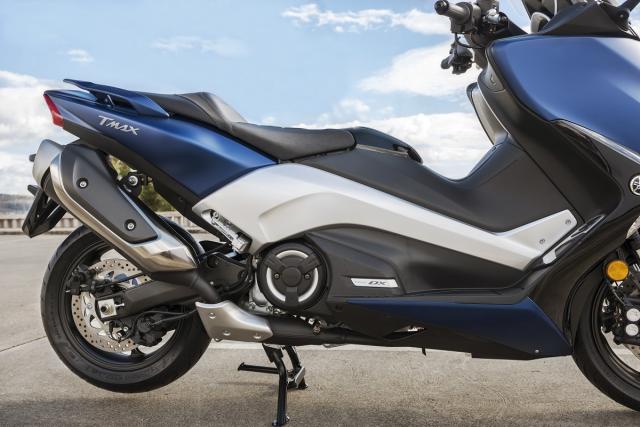
Ready to roll, with its 15 litre tank full up, it weighs 216kg wet. It’s not exactly light, but swap the 6 and the 1 around, and you’ve got the wet weight of the C650GT, which means the 15 extra horsepower the BMW has over the Yamaha isn’t a big deal. It’s the same story with the Suzuki Burgman 650 Executive – it makes 55hp, but weighs a hefty 277kg. The Yamaha might have the smallest capacity and power of this bunch, but its numbers work for, not against it.
After 115 miles that at times was bordering on a journalist scooter race, according to the figures on the dash, the TMAX returned an average of 48mpg, so I’d expect that figure to be over 60 in town and with less thrashing.
Cutting through the centre of Cape Town immediately revealed that there’s plenty of poke for rapid traffic light getaways and swift urban progress. When that dual carriageway becomes a motorway, if you really need to hit triple digit speeds in the fast lane, the TMAX is happy to oblige and from 4-5k there’s always enough power at the ready to make a quick overtake.
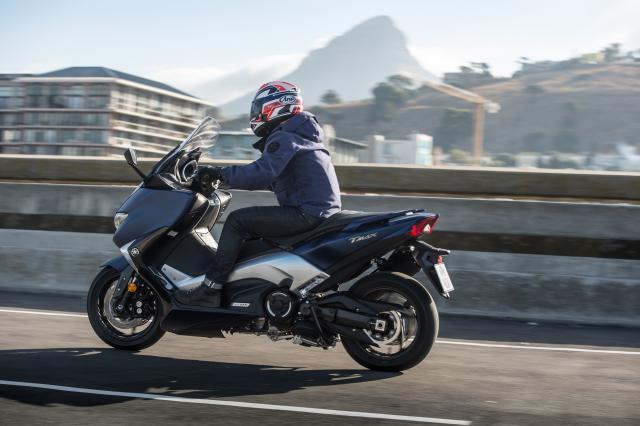
Along with the Euro4-related engine changes, all the new TMAXs have traction control, which works by controlling the ignition timing and fuel injection. Don’t scoff – this bike makes enough power to mean you could lose it as you accelerate away from a slippery roundabout or junction drowned in diesel. Traction control is key to making this bike so ready face up to whatever conditions await on the other side of the garage door and on a sandy stretch of road, I got to feel it working hard to keep things in order.
The DX has two riding modes. Riding modes! On a scooter! This is all getting a bit silly, isn’t it? Said modes, which Yamaha terms D-Mode technology, are: Sport (S) and Touring (T). Both deliver the same power, but T mode gives you a much softer throttle map. Switching between modes can be done while riding, with the press of a button.
At the end of the day, I couldn’t shake the feeling that it’s a gimmick. In Sport mode the throttle response is so precise and crisp that I can’t see why you’d use Touring mode. I tried Touring for a mile or two in the centre of Cape Town and for those couple of miles, the TMAX felt flat, like it should be called the TMIN. There’s an argument for it in the rain, but with such a crisp, smooth and predictable throttle response and lovely fuelling in Sport mode, plus the traction control to help if the tyre-tarmac interface becomes fraught, I’m not the person to be making the case for it.
BUT I WILL make a case for the TMAX’s excellent handling; it’s the best handling scooter I’ve ever ridden. It’s super stable in corners and where a lot of scooters suffer from a vague front end when ridden enthusiastically, the TMAX DX and its Dunlop Sportmax Roadster tyres managed to deliver an assured front-end feeling that has more in common with a bike than a scooter. It’ll be interesting to see how it fares against the Honda Integra, which is basically a bike dressed up in scooter clothes.
It’s handles with a deftness and lightness that had me recalling the changes Yamaha have made to the 2017 model to make it less hefty on the scales. The 77mm shorter exhaust silencer undoubtedly plays its part, as does the new lighter frame and lighter wheels, which save a claimed 9kg.
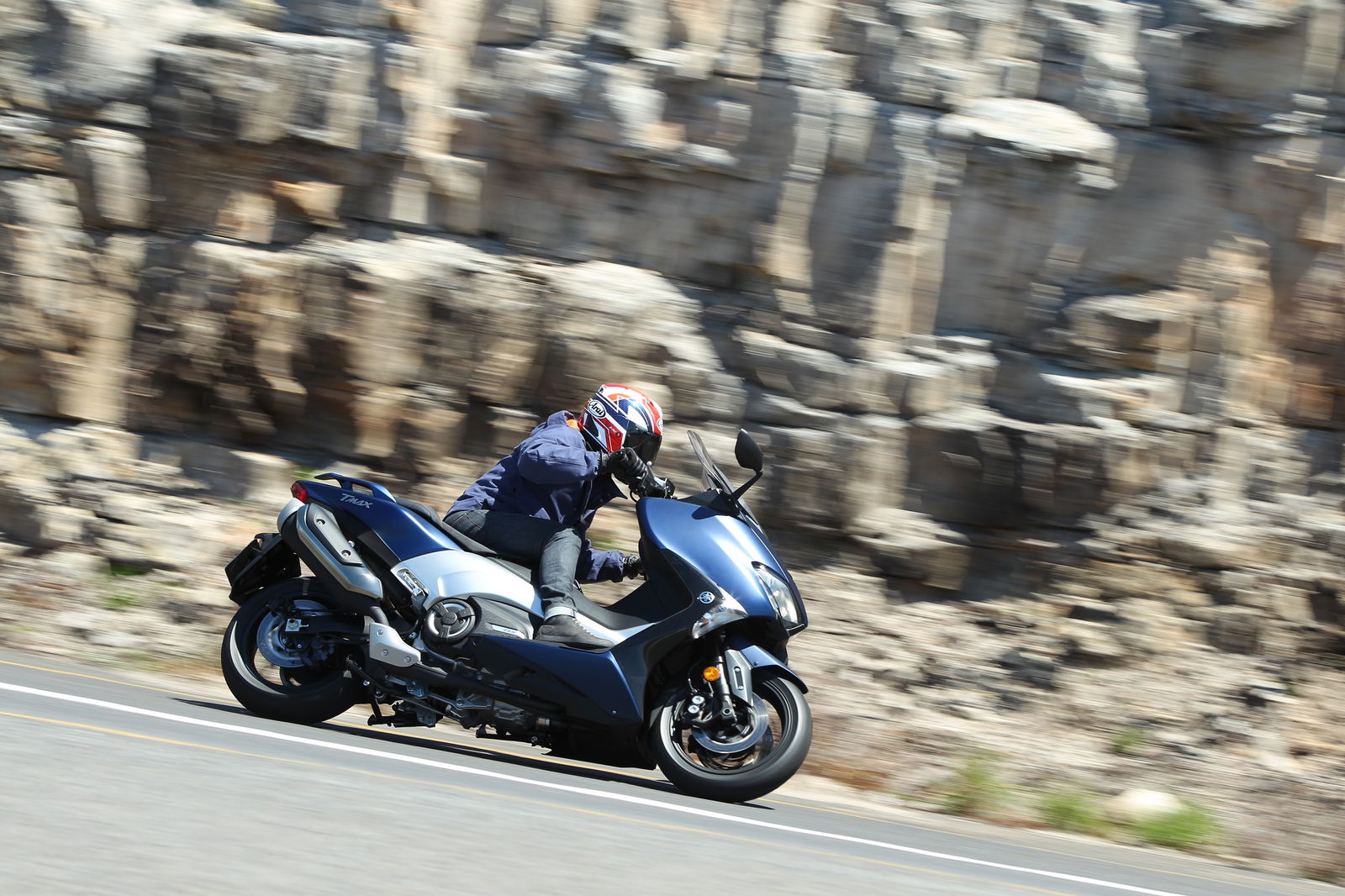
The new 40mm longer swingarm might not be too much of a weight saver but it certainly helps with how stable the TMAX feels when it comes to railing round corners with gusto. The rear also felt comfortable without being saggy or wallowy, as I sometimes find on scooters and the rear shock is adjustable for preload and rebound damping.
The new model is unfazed with being chucked from left to right in rapid fashion. Compared to most other big scoots I’ve ridden, will happily handle more aggressive riding before the feedback it gives starts to become vague and nervy so it’s as fun and capable outside of the city as it is coursing through the heart of it.
Stability and composure is ably aided by suspension that handles the TMAX’s weight well, while allowing for sporty riding. It’s slightly altered from the previous model – in the front there’s a 41mm USD fork, with a different damper spec to match the overall weight reduction, while the rear has a motorcycle-style linkage and horizontal shock. The result is a plush connection to the road, and good composure at speed – although expect the centre stand to touch down if you’re really going for it en route to a meeting. The suspension can get flustered by bumpy roads taken at speed, but other than that, there’s nothing to complain about.
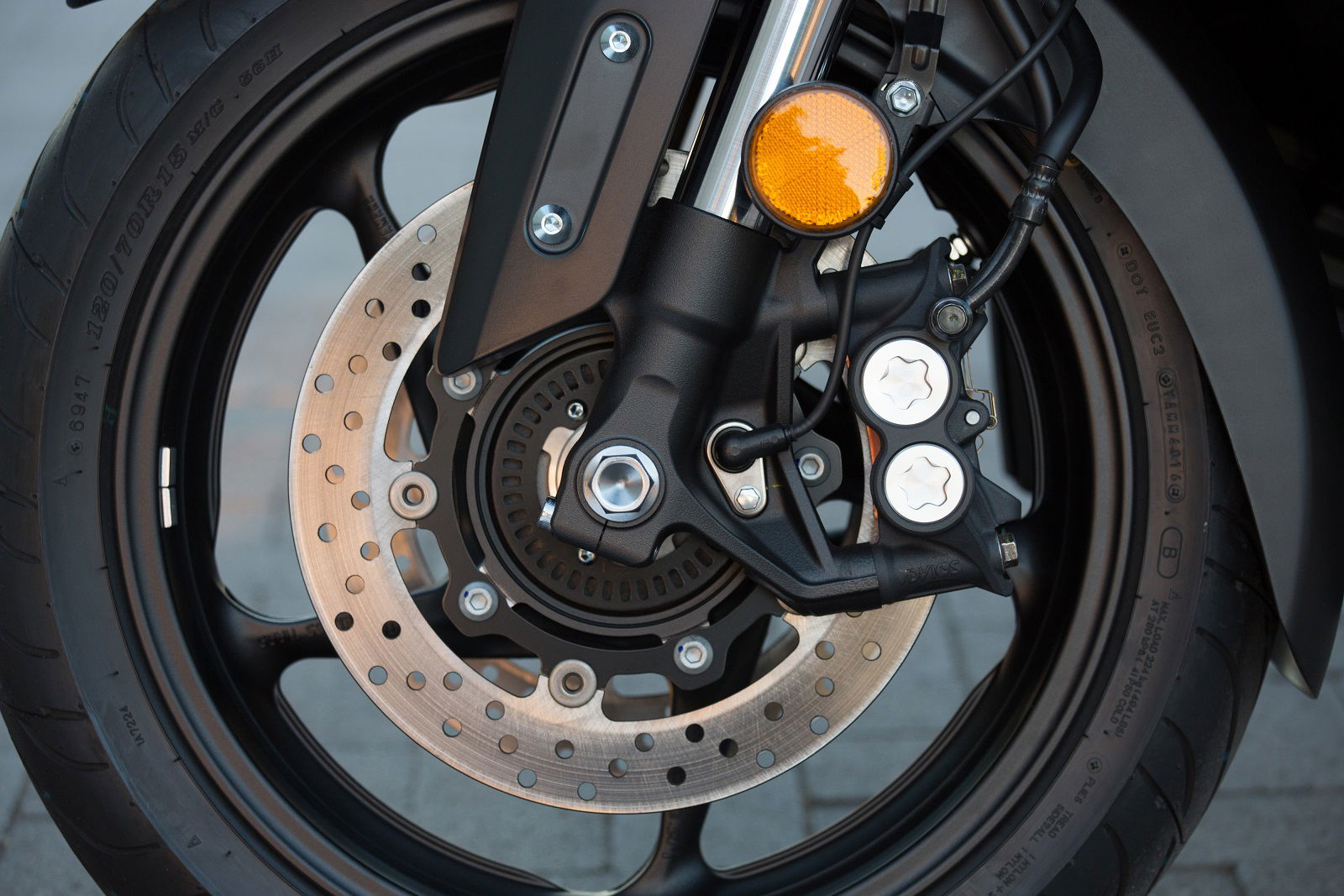
The TMAX’s twin radial front calipers and 267mm discs, and rear single-piston caliper and 282 mm disc complete the sacred trinity of handling, going and stopping. The brake setup offers plenty of power and good feel through both levers and during a day punctuated by some occasionally rapid riding, the brakes never failed to deliver. It would be nice to turn off, or turn down the level of ABS at the rear, as squeezing the rear brake lever often resulted in a stern pulse through the lever, and of course, difficulty in doing skids.
Along with the good feel from the brakes, there was good feel through my arse as well, or rather, my bottom felt good thanks to the TMAX’s comfortable seat. It’s not as luxurious as the sumptuous saddle on the BMW C650 GT, but it’s good, although a slightly taller lumbar support would make all the difference on long haul rides.
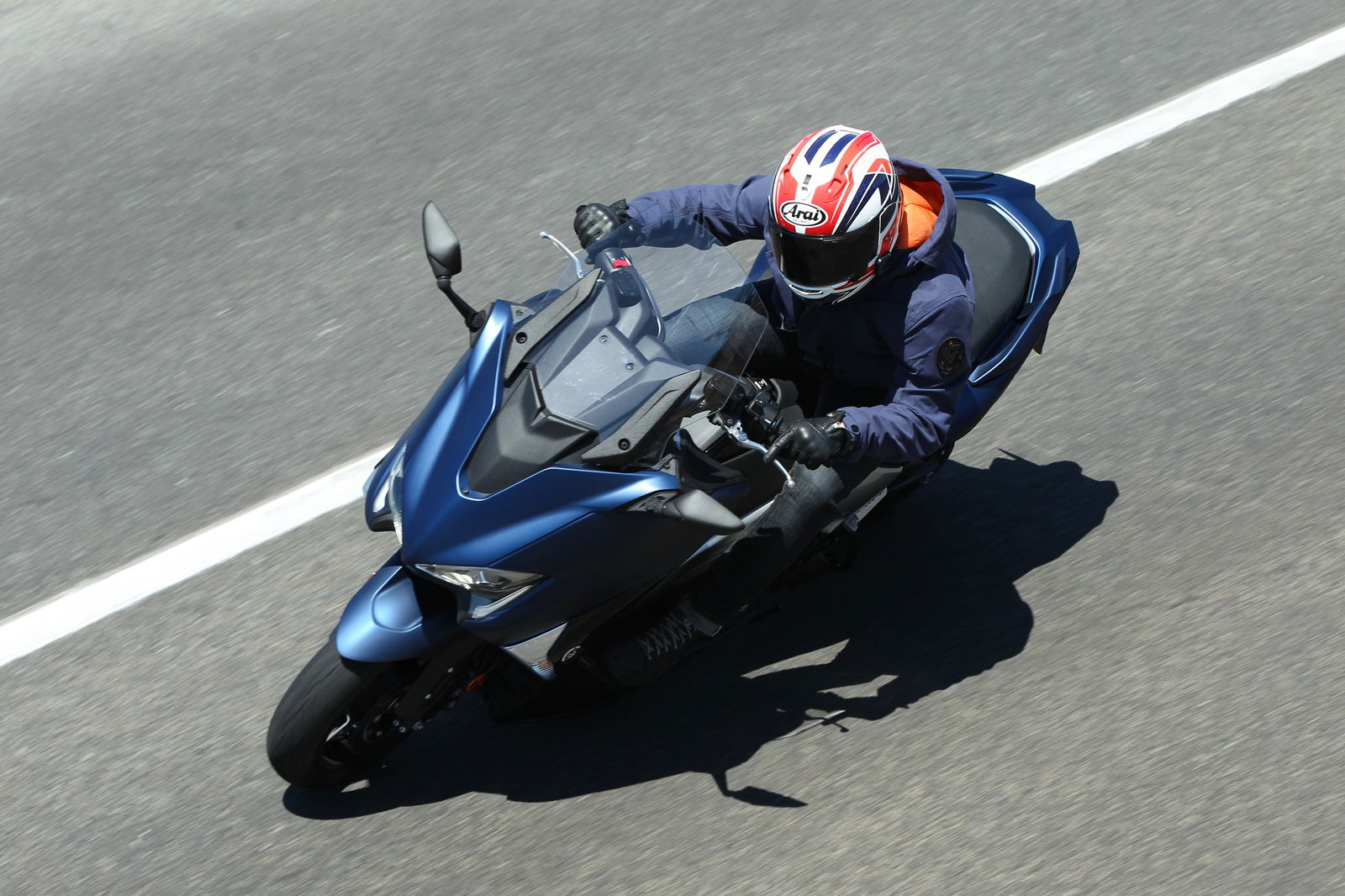
Comfort continues in the leg area too. I might not have the longest legs in the world but could fully extend them and had plenty of room to move them about as I wanted. The ride position is typical of a maxi-scooter – legs wide, arms fairly wide to meet the wide, well positioned bars and an upright seating position. It’s comfortable at all speeds and makes the bike a doddle to handle, irrespective of whether you’re slowing picking through a traffic jam or flying through a fast sweeping bend.
There’s also abundant space under the seat – enough for a full-face lid or two open face crash hats. With a full-face lid in there, you’ll also be able to stow some shopping. Under the right switchgear there’s a glove box with enough space for a phone, wallet, keys and fags (if you’re still hard enough to smoke) but it’s a bit awkward to open. It’s the only thing on the TMAX that feels poorly designed and a little piece of rubber on the outside for purchase when opening it would solve the problem.
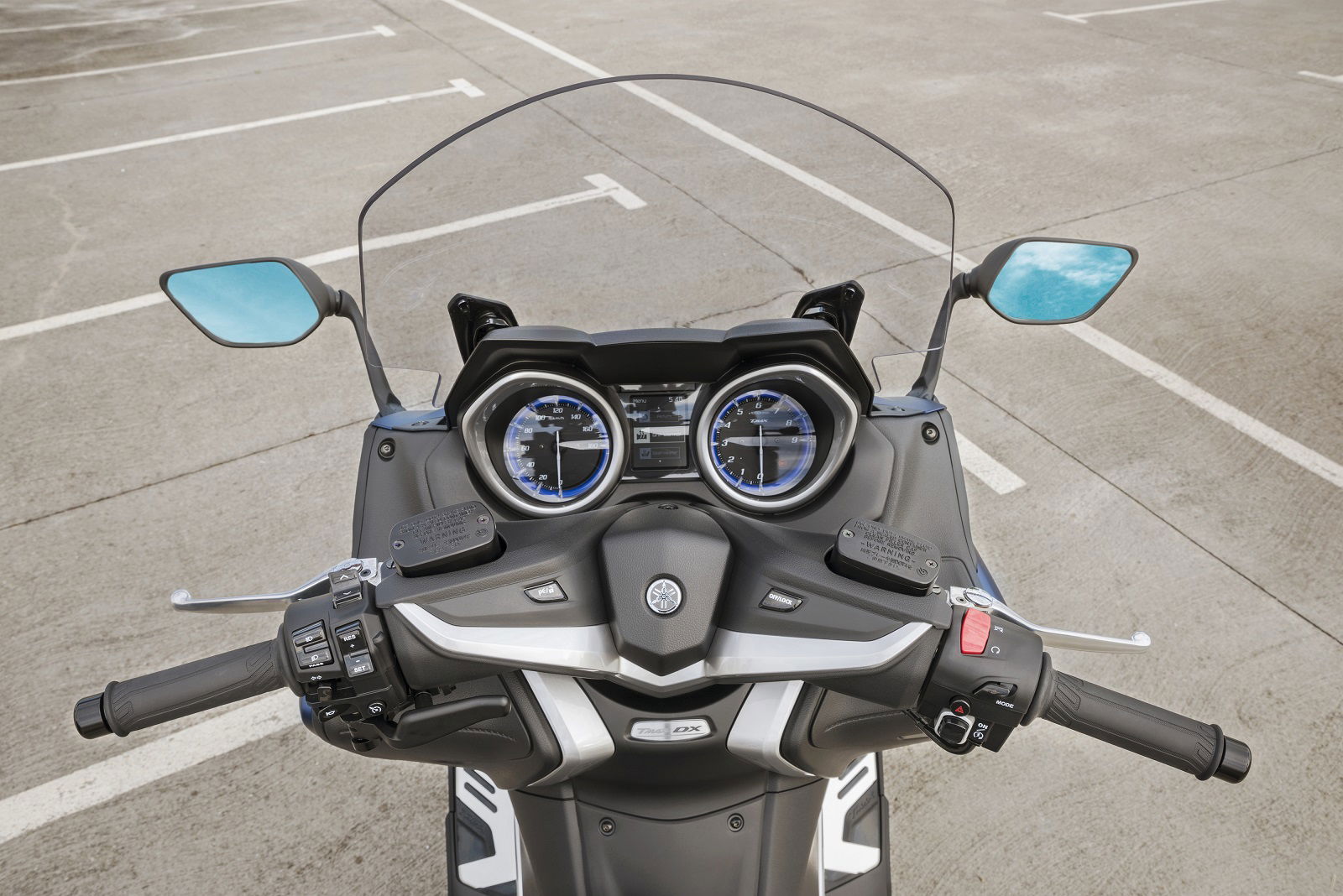
The new TFT display, sandwiched between the speedo and rev counter, is clear and easy to read and the buttons on the left switchgear to control the screen, heated bits, ride mode, and display fuel consumption, trip meter etc work in an intuitive fashion. Traction control is really easy to set and operate. I’d like it if the menu scrolling buttons were a bit closer to the outside of the switchgear, so I didn’t have to move my hand to an unnatural-feeling position to use them.
Other tech-based goodies on the TMAX include the TMAX connect feature – the TMAX features a telematic control unit which pairs with an app that’ll alert you if the bike moves when it shouldn’t be, record ride data, remotely cut the ignition and a whole load of other useful stuff. The app is free and simple to use. Subscription is free for the first year and you don’t need the app for it to operate as an anti-theft device.
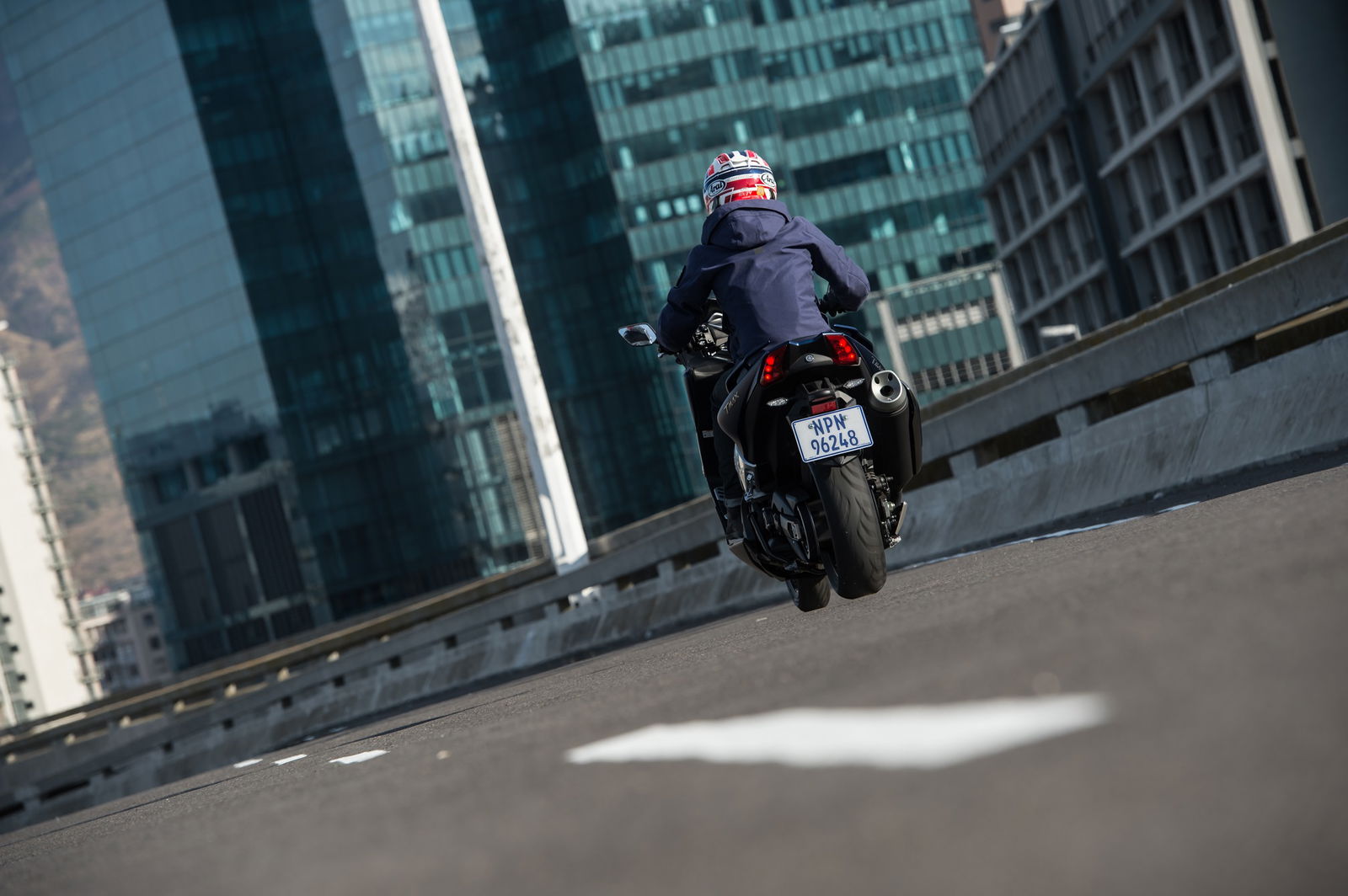
And if your TMAX does get targeted by some scumbags, there’s always the chance they’ll get defeated by the centre stand, which locks into place when the bike is locked. There’s also the hope that they’ll abandon the bike due to the amount it beeps; it chirps incessantly when you unlock it, if you try to start it with the stand down, if you touch it inappropriately. By the end of the day’s test ride, I’d started to find it irritating – although I did a lot of button pressing buffoonery during the day as I got to figure out what I could/couldn’t do with it while it was locked/unlocked, etc.
I’ve no doubt the TMAX would tell me off less frequently once I’d become really familiar with intricacies of its electronic system. But would I want to spend more time with it? Yes. The new TMAX DX is a maxi scooter that's a mix of comfort, luxury and city savvy mixed with perky performance and it proves that two-wheeled transport can have a bit of attitude.
Model tested: Yamaha TMAX DX
Price: £10,699
Engine: 530cc liquid-cooled DOHC parallel twin
Power: 45hp at 6,750rpm
Torque: 39lb/ft at 5,250rpm
Suspension: Front – USD fork, 120mm travel / Rear – Monoshock with preload and rebound damping adjustment
Brakes: Front – Twin radial-mount calipers and 267mm discs / Rear – Single-piston caliper and 282mm disc
Seat height: 800mm
Fuel capacity: 15 litres
Weight: 216kg (wet, full tank)
